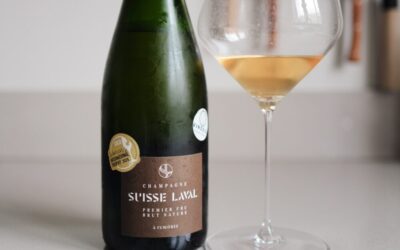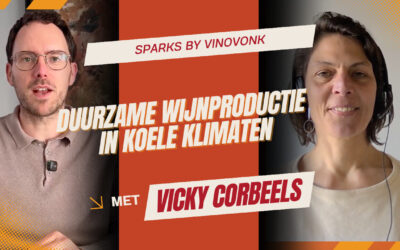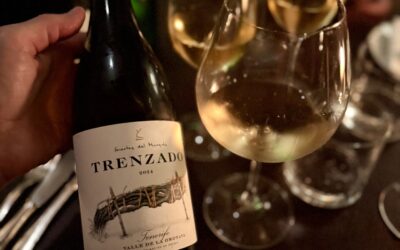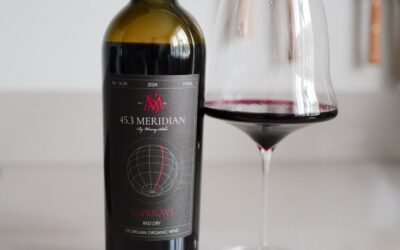Four bottles sat in front of me. Two with wax seals, two without. Carla Maria Dias Tiago appeared on my screen from Kopke’s tasting room in Porto, bottles lining every surface behind her.
“This is not a virtual background,” she laughed when I asked.
What followed was 56 minutes that completely changed how I think about Port wine—and yes, there’s even a moment where someone knocks on my door asking for money mid-interview. Real podcast life, unedited.
Why This Interview Matters
Carla is one of the winemakers responsible for Kopke, the world’s oldest Port house, established in 1638. That’s not marketing speak—Kopke maintains Colheitas (single-vintage Ports) dating back to 1934. Wines are still aging in barrels and continue to evolve after nine decades.
“Our job is making sure we’re taking good care of all these old wines in our cellars and producing new ones for the next generation,” she told me.
She’s not just a winemaker. She’s a guardian of liquid history. Working with wines made by people long dead while producing for winemakers not yet born. Her insights stem from years spent in the Douro Valley, intimate knowledge of Kopke’s extensive cellars, and a genuine passion for challenging Port’s traditional reputation.
This isn’t a scripted promotion. It’s a real conversation between a wine expert and someone (me), discovering that everything I thought I knew about Port was incomplete at best, wrong at worst.
Three Things That Floored Me
1. Temperature Changes Everything
“I always recommend chilling them,” Carla said emphatically. All Port wines. Including Tawnies. Even some Rubies.
The Port contains 20% alcohol and approximately 100 grams of sugar per liter. Room temperature? Overwhelming. Chilled to 12-16°C depending on style? Balanced, fresh, elegant.
This one tip transformed how I serve and enjoy Port. Watch the video to see my actual reaction when tasting the difference.
2. White Port Is Seriously Complex
I thought white Port was simply an aperitif wine for spritzers. Then I tasted a 2014 White Colheita and a 10-Year-Old side by side.
Orange blossom. Tropical fruit. Cookie dough. Dried peach. Intense layering—and that crucial balance between sweetness and acidity that makes you want another sip.
Carla explains the difference between Colheitas (single vintages that evolve) and aged blends (consistent profiles year after year). Understanding this distinction unlocks the entire category structure of Port.
3. Most Port Houses Can’t Afford What Kopke Does
Maintaining wines for decades without selling them?
“It’s like a huge project—you always have to think about the next decades,” Carla explained. The economic commitment required for Colheita production explains why most houses don’t attempt it—fascinating business reality behind heritage winemaking.
Moments Worth Watching
The wax seal mystery opens the conversation, leading to an understanding of Kof opke’s entire philosophy. Carla’s face when she lists wines from 1934, ’35, ’37, ’38, ’40s, ’50s—you can see the weight of responsibility and pride.
Around minute 36, someone knocks on my door mid-tasting. I kept it in. Authentically chaotic. Carla handled it with grace and humor.
Watch for her Port & Tonic explanation around the 51-minute mark—her favorite garnish is orange peel, and she demonstrates why this cocktail matters for Port’s future with younger generations.
The comparative tasting sequence, which goes through all four wines? Masterclass material. Carla doesn’t just describe wines; she explains why they taste the way they do, what’s happening in the barrel, and how temperature affects perception.
Fair warning: at 56 minutes, this is a deep dive. If you’re looking for quick soundbites, this isn’t that. Some technical terminology (Colheita, oxidation, IVDP certification) might require rewatching to grasp fully.
What You’ll Learn
By the end, you’ll understand:
- Proper Port serving temperatures for every style
- Why most houses don’t make Colheitas
- Single-vintage vs. aged blend Ports
- Food pairings beyond cheese (oysters with white Port!)
- How to store opened Port (months, not weeks)
- Correct glassware (not those tiny traditional glasses)
- Port & Tonic recipe variations
- Why visiting Kopke’s cellars should be on your Porto itinerary
Carla also shares her journey from her first harvest in 2005 to becoming a winemaker at one of Port’s most prestigious houses, inspiring anyone interested in wine careers or appreciating the people behind the bottles.
Watch the Full Interview:
Subscribe to Sparks by VinoVonk
This episode is part of Sparks by VinoVonk, my video podcast exploring wine, spirits, and innovative drinks through conversations with winemakers, importers, and industry professionals.
Subscribe on YouTube | Listen on Spotify | More Episodes
This conversation didn’t just teach me about Port—it made me rethink the distinction between tradition and quality, the responsibility of heritage brands, and the impact of temperature on wine.
Grab a glass (perhaps Port, properly chilled), invest 56 minutes, and discover why Kopke has survived for 386 years while constantly evolving.
And seriously—chill your Port. Carla’s absolutely right.
For additional information about Kopke, please visit their website: https://kopke1638.com/






